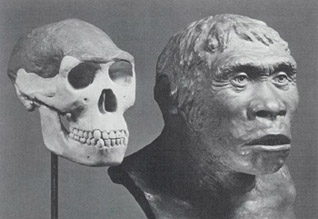Playing is Learning
The Discovery of Eugene Dubois
November 27th, 2014
| Ads | ||
|
Play the Challenge
|
||
|
A New Word is Coined A new Character is revealed A new Game is Afoot |
An Edutainment Adventure Based on Three Rounds of Investigations
|
|
|
Welcome to the World of PROFESsee™by seeCOSM™ PROFESsee™ is my title. I am the perpetual learner, in pursuit of knowledge, wisdom and truth. I derived my name from professor |
 |
|
|
Some very funny person in the study of history thinks that a difference of 64 miles is a small distance, where as that is like traveling from one state to another in America. However, History does have its marvels and this representation of two areas that are hundreds of kilometers apart as being in the same area is probably one of them.
Discovered by Eugene Dubois in 1891, this one was branded as bad science, may be because he first kept it hidden before coming out with the discovery. But whether it was bad science or not, the fact remains that the skulls are that of man and that they play a vital role in the history of humankind. In fact, there was a discovery of two skulls in the Wadjak Area, which eventually led to them being called the wadjak skulls. Although the skulls were found 64 miles apart, that in archeological terms is referred to as very close to each other and that is why the skulls are referred to by the same name.
But why make a discovery and then hide it in the closet? Or is it a case of hidden skeletons in the closets? That must have been the thought in the mind of Eugene Dubois and while it was criticized, his skulls have more or less come to be included in the books of history. There seems to be more controversy here because another scientist, Lubenow, claims that although Dubois wrote papers on the two skulls, he kept them to himself. However, facts show that Dubois’ papers were distributed in Europe and America.
So here goes, is this a real discovery and not a skeleton in the closet as some critics would like to claim? Personally, not being a history person, I wouldn’t know, but I would like the truth about the Wadjak skulls to come out once and for all, and the world to know who discovered them.
Image courtesy of: http://www.universityofbrattleboro.com/coffee-mugs/ |
||
Latest News / Events
E-mail [email protected]
The Professee™ Newsletter Beta
http://www.seecosm.com/
http://www.seecosm.com/

